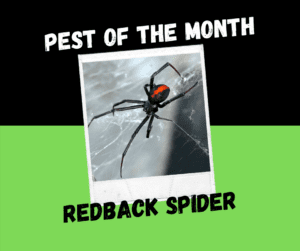
THE REDBACK SPIDER (Latrodectus hasselti)
A spider, unmistakable. Its shiny black cuticle glistens around its velvet red stripe. A spider with a
lethal venom and an explosive breeding rate. Red back spider
are infamous for their deadly venom and adaptability to the human environment.
They are immortalised in
history and send shivers down the spine of any grown man with the stories
from out-houses past.
In the modern days, with the introduction of anti-venom, the lethal risk of red back spider
has been
significantly reduced.
The risk remains for fragile people, however the delay in effect from the
venom usually allows plenty of time to seek medical help and administer anti-venom.
The Redback spider builds their web around stationary items which facilitate their messy, up/down
web design. These will often include children’s toys, shoe racks, pot plants, the family barbecue and
roofing trusses. Their messily constructed web catches debris and is easy to identify and will be
constructed with an easy escape and hide route.
The
Red back spider
Is hesitant to bite and prefers to hide, but it’s the amount of spiders and their shared spaces with humans which contribute to the 2000 recorded cases of envenomation per year in Australia. Their web will often hold the iconic “white ball”, a silken white egg sac which looks small, at around 10mm across but holds on average 250 eggs. This is why Redback infestations can explode from minor to extensive seemingly overnight throughthe months of September- April on the Mid North Coast.
So, what should you do to prevent Redback infestations?
Local Pest Experts provide a thorough, complete blanket treatment to external walls, eaves and under guttering (including fence lines, outdoor furniture etc) in conjunction with our roof cavity treatment which is necessary to achieve complete population control. There are a few things you can do at home to help as well.
– Clearing of cluttered items such as tyres, stacked kids’ toys, pot plants and unused shoes will
reduce harbourage sites.
– Diligently removing and webs and egg sacs NOW can prevent hatchings at your house.
– Moving/disturbing necessary stationary items like tables and chairs will prevent healthy
populations building up in these areas.
Small children are most at risk from redback spider bites. The mix of an inquisitive mind and a shiny red and black thing make the temptation to touch irresistible. If you have small children around your house, or just don’t like to live with spiders, ask Local Pest Experts how we can help.